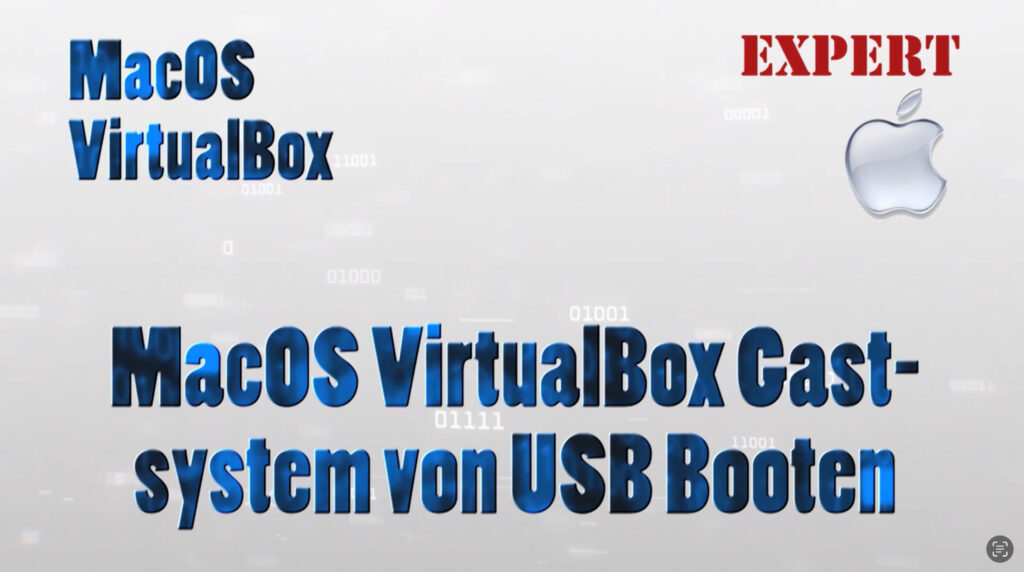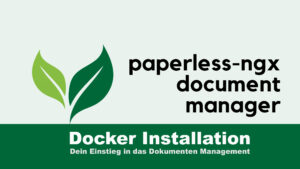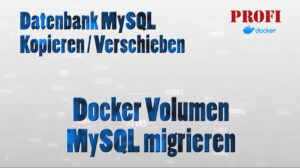MacOS VirtualBox boot guest system from USB
VirtualBox boot guest system from USB ? Yes, of course you can 😁 These instructions are for MacOS, but can also be adapted for WINDOWS. Step by step.
The related command line for WINDOWS and instructions can be found below.
The trick to starting a virtual machine from a USB drive is to link a “Virtual disk” shortcut in the “Virtual machine” to the “USB device” on the “Local PC or NB” 😳 Sounds stupid, but it’s true 😂
☝️… stay relaxed, it will get even better 👍😁
About VirtualBox
VirtualBox enables you to create and use a virtual computer under WINDOWS, for example. For example, you can run a Linux in a window as your own PC under WINDOWS. VirtualBox simulates the PC for you under WINDOWS.
You can get VirtualBox free of charge directly from the manufacturer Oracle
Video: MacOS VirtualBox boot guest system from USB
Language: 🇩🇪
Subtitle: 🇩🇪🇬🇧
Determining the drive ID
First you need the disk ID / drive ID or whatever you like to call it. You will receive the drive number (e.g. Disk 1 or Disk3):
diskutil listto display it.
Now, details in the video, search for the drive and note the disk number. Also note the partitions (e.g. Disk3s1, Disk3s2 etc.)
Take ownership of the drive
In the next step, you take ownership of the data carrier, including the partitions. In the example shown, this is a USB stick. You can also use a hard disk, for example.
sudo chown [username] /dev/disk[3]*
# Example sudo chown mike /dev/disk3*Replace “username” with your user name
Replace the “3” in “Disk3” with your disk number
The asterisk “*” at the end must remain so that the authorizations are transferred to the subdirectories.
Remove the brackets “[” and “]” of course, these are just placeholders
Unmounten
Next you unmount the partitions, not the drive e.g. disk3 !
If you unmount the drive, it is no longer usable for you. Therefore, you only unmount the partitions so that the drive remains available for you.
diskutil unmount /dev/disk3s1if further partitions are available:
diskutil unmount /dev/disk3s2Replace the disk number, here “disk3” with the disk number you are using.
Creating the VMDK hard disk file
MacOS
sudo VBoxManage createmedium disk --filename bootcamp.vmdk --format=VMDK --variant=rawdisk --property RawDrive=/dev/disk3WINDOWS
vboxmanage createmedium disk --filename usb.vmdk --format=VMDK --variant RawDisk --property RawDrive=\\.\PhysicalDriveXStart VirtualBox correctly with “sudo”
For this to work properly under MacOS, you must start VirtualBox in administrative mode with all rights.
sudo virtualboxPlease do not be alarmed if you do not see your VMs, when you start VirtualBox again normally all VMs are there.
VM Setup
Follow the video on how to set up a VM that starts with the VMDK file.
IMPORTANT: Fix the annoying unmount and possible errors
If the VDMK file cannot be loaded into the VirtualBox, try the following:
- Check if the USB device is online, unmount the partitions if necessary.
- Run “sudo chown mike /dev/disk3*” (replace disk3 with your drive ID, and the user name with yours) to reset the permissions again
- Reset the permissions for the VMDK file. sudo chown mike *.vmdk”. Replace “mike” with your user name.

Support / Donation Link for the Channel
If my posts have been helpful or supported you in any way, I’d truly appreciate your support 🙏
#VirtualBox #StartVMfromUSB #StartVirtualMachinefromUSB #StartVirtualBoxUSB #VirtualBoxUSBboot #MacOS #Apple #MacBook #iMac



